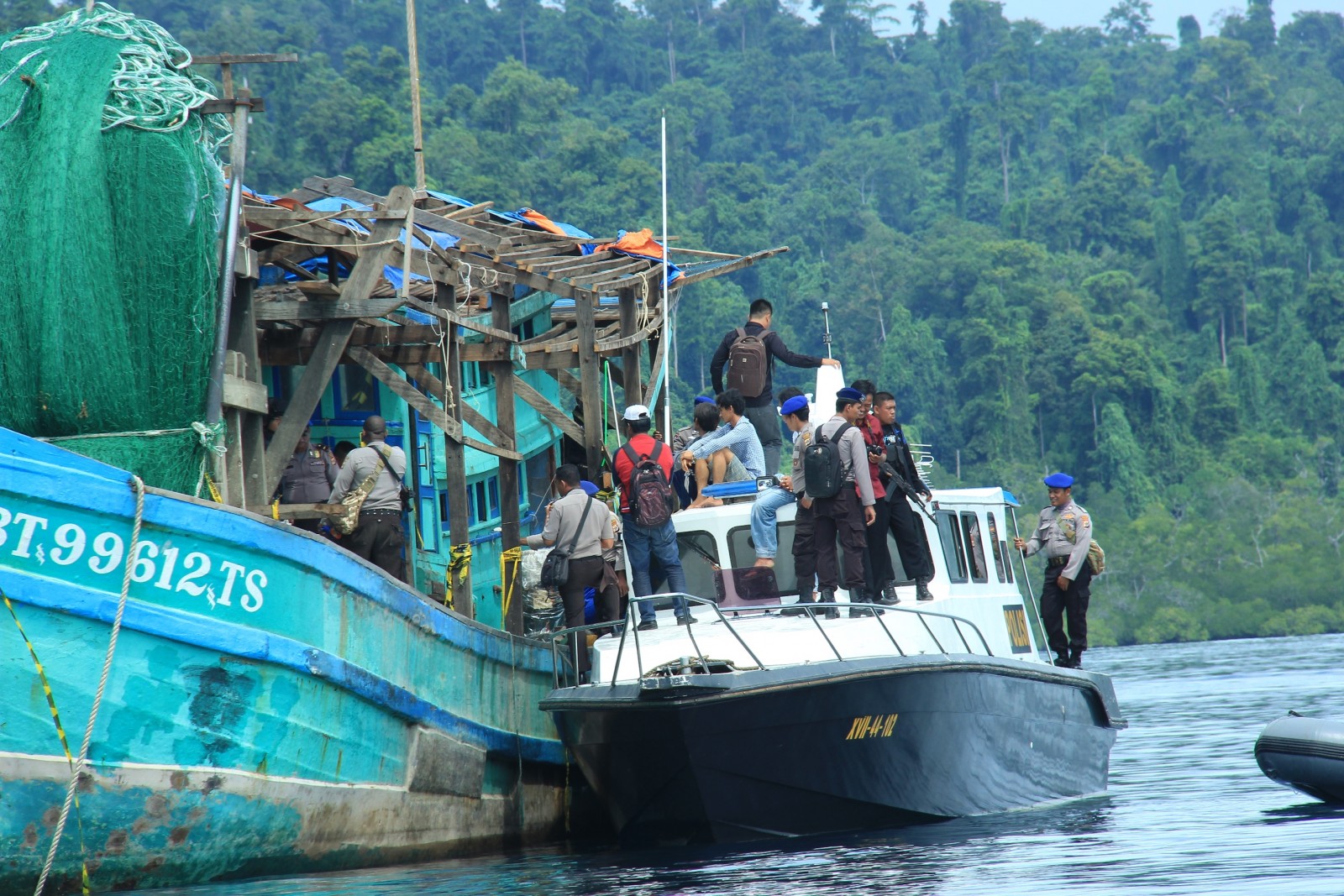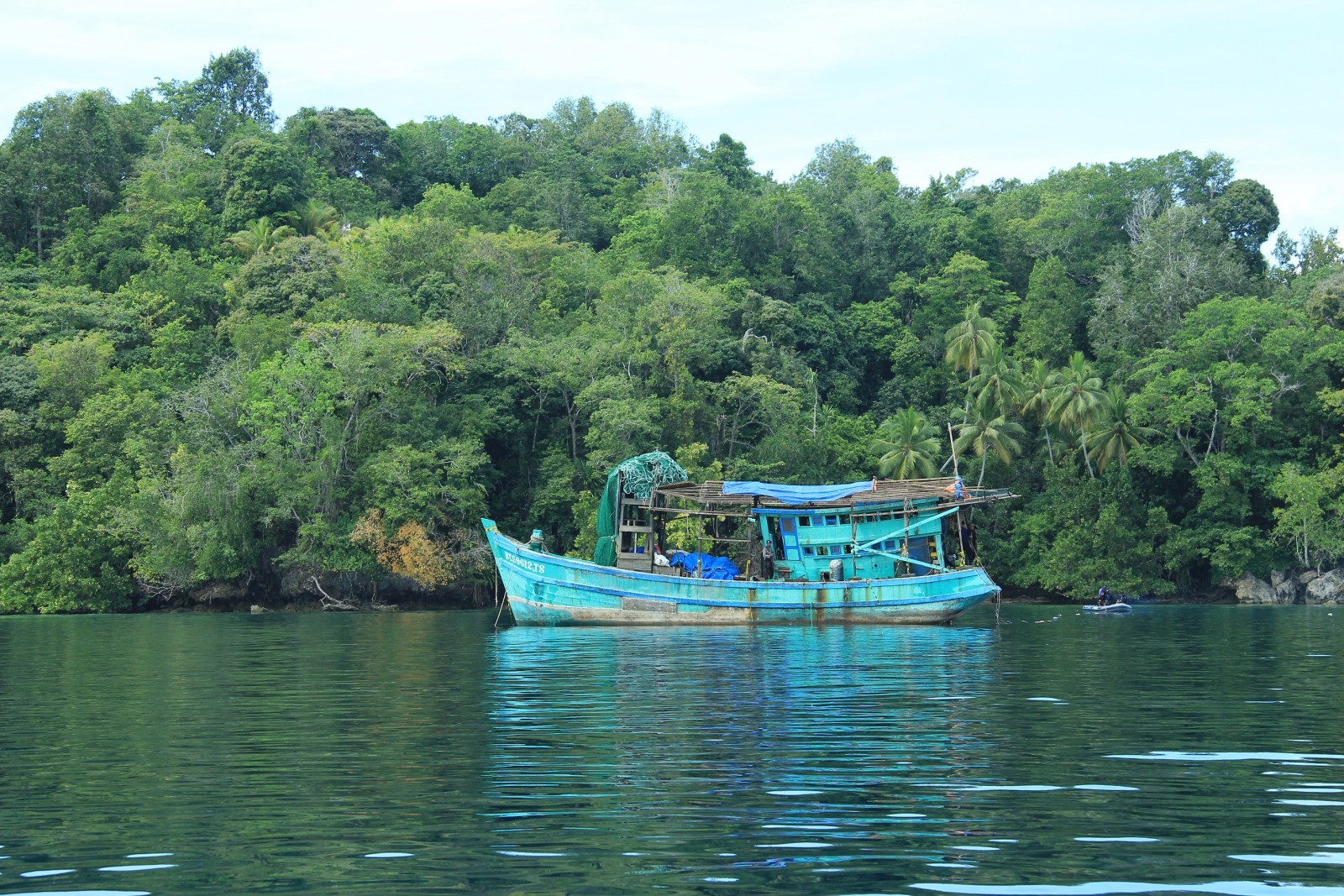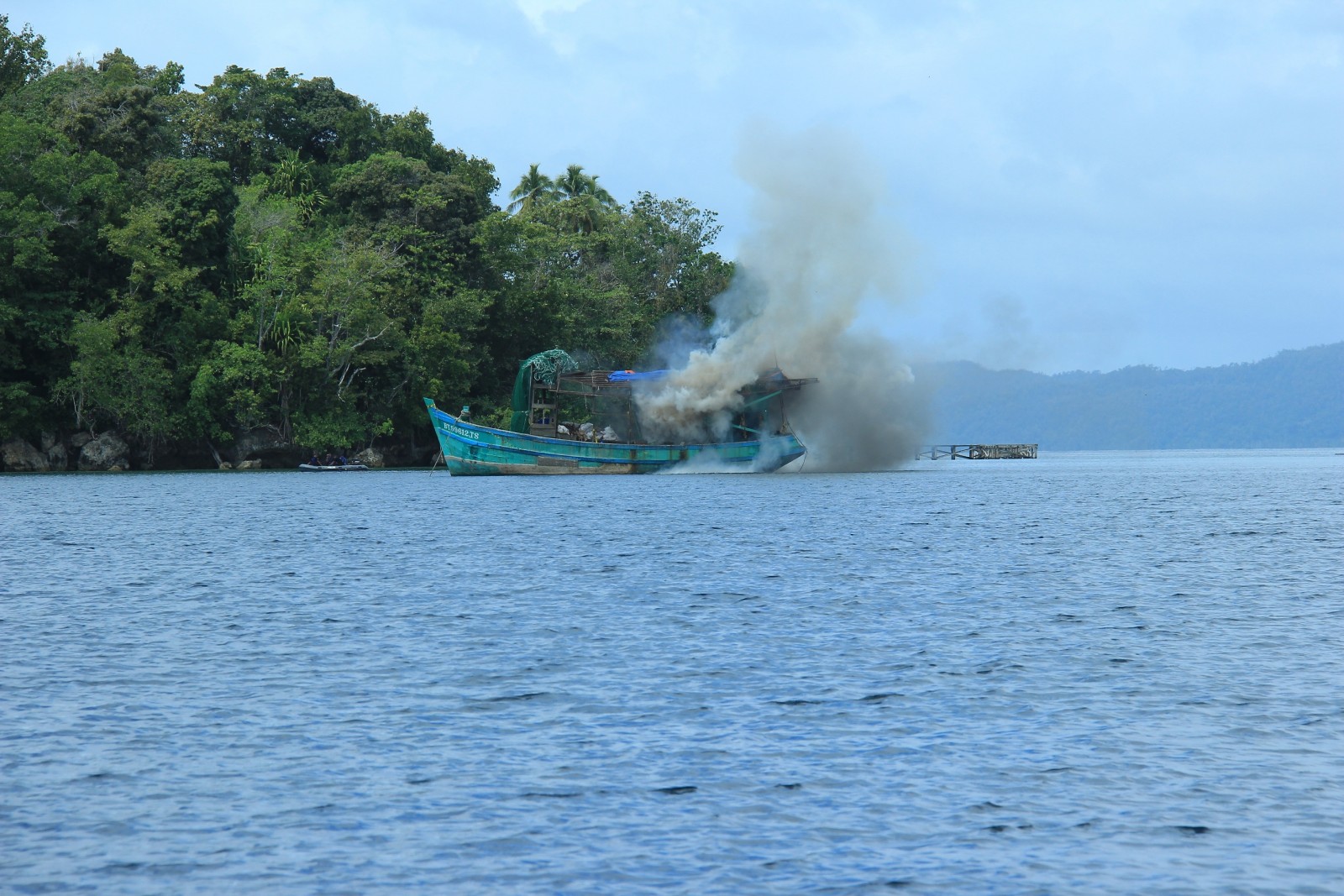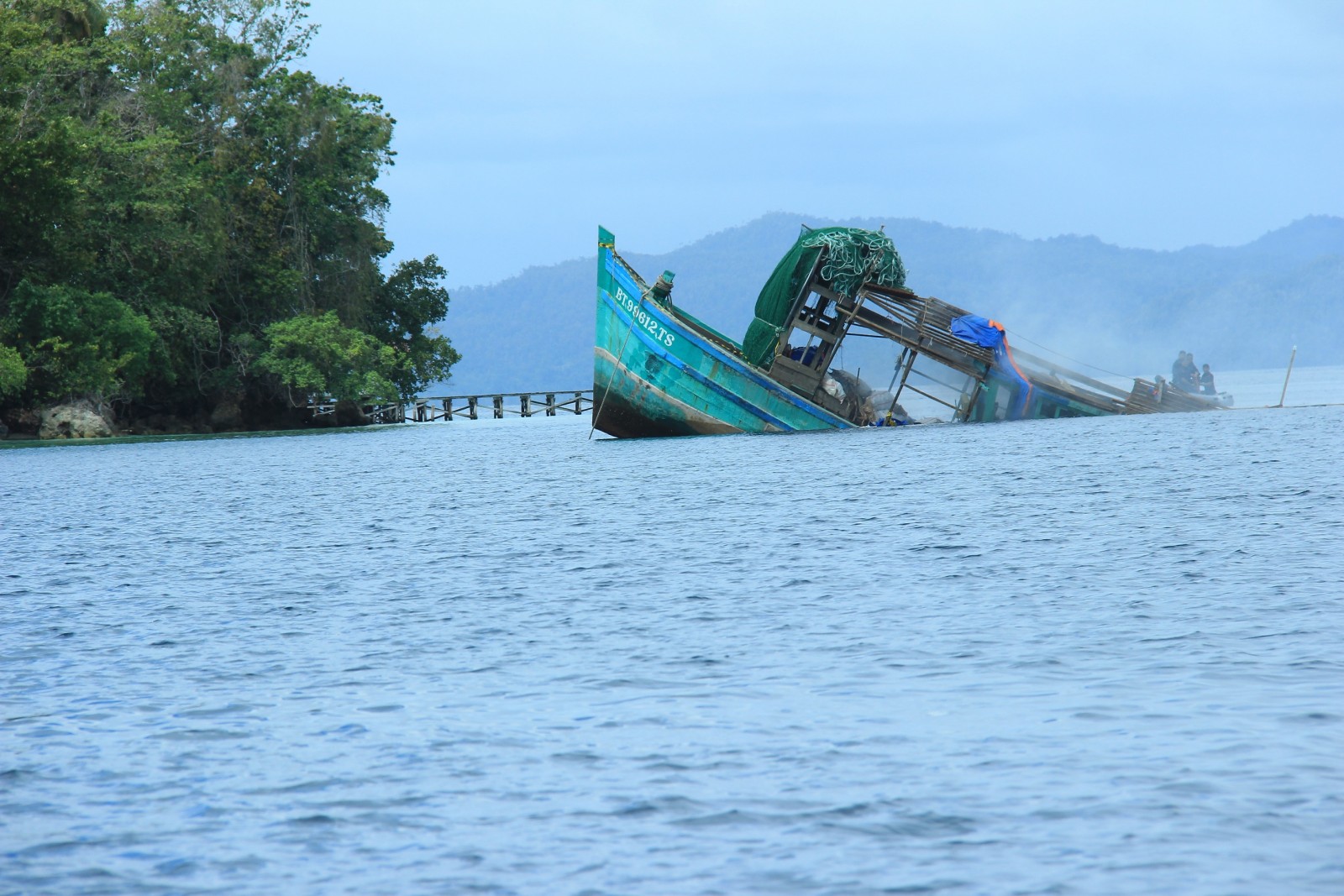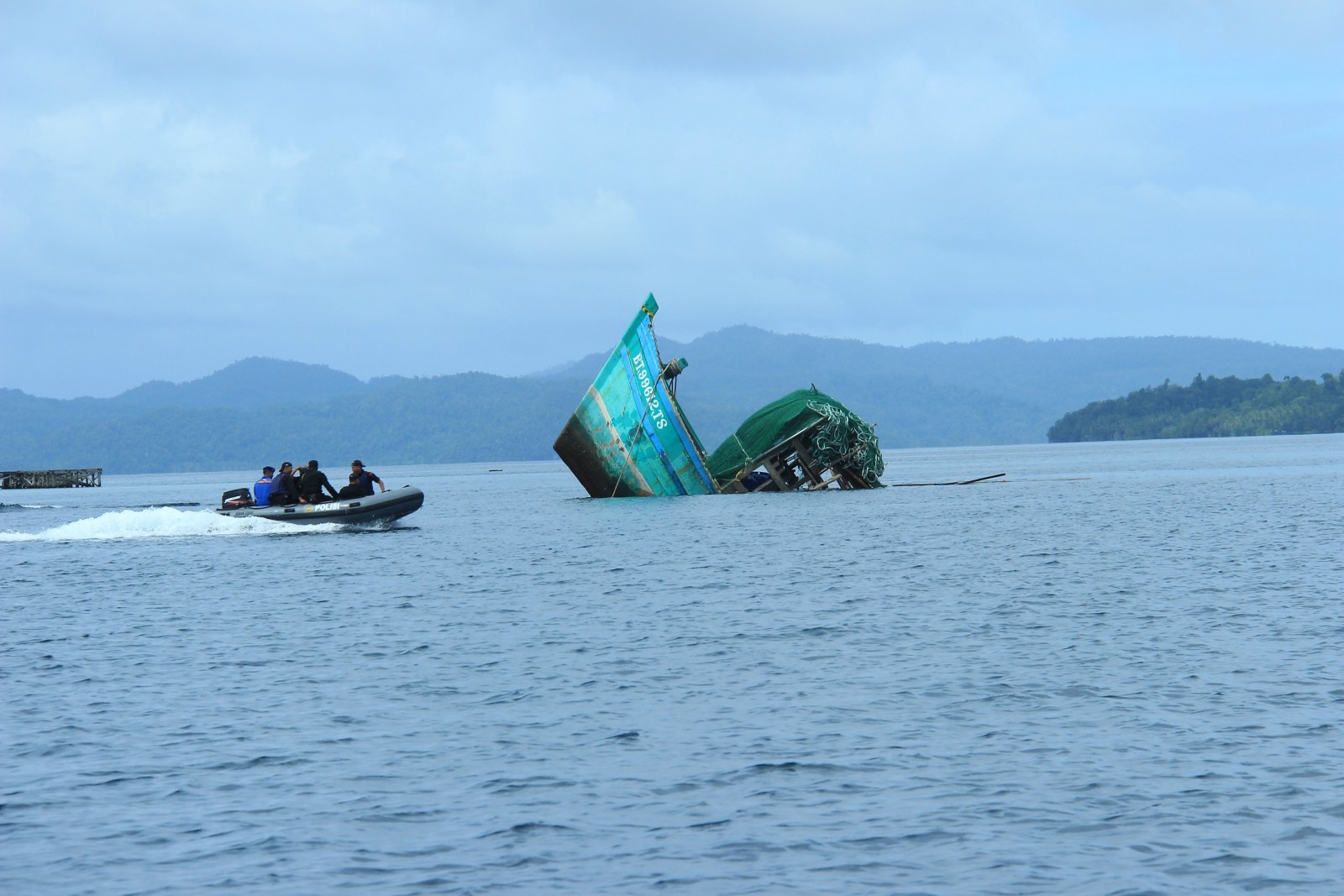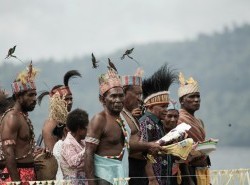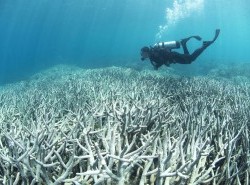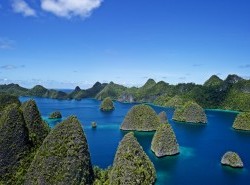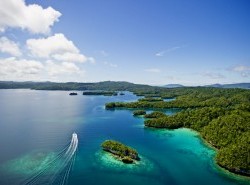Indonesian authorities scuppered another illegal fishing boat at the end of February, this time in the remote south of the Raja Ampat Islands, just off the coast of West Papua. Local Papuan rangers spotted the 55-tonne Vietnamese vessel as it deployed a gill net in a Marine Protected Area (MPA). On board, police found more than two tonnes of drying shark fins, 80 critically endangered Hawksbill turtles and many other species, bound for the Philippines. Just over a week ago, the captain and crew of the boat were all handed prison sentences of four and three years respectively as well as hefty fines, which will be commuted to an additional six months in jail should they be unable to pay them.
There is good reason to focus conservation efforts on Raja Ampat – the region supports more marine species than anywhere else on the planet, including at least 553 types of coral and 1470 species of reef fish. There are single reefs here that contain more species than the entire Caribbean. Scientists also believe that Raja Ampat’s corals may be more resilient to bleaching episodes caused by rising sea temperatures.
“Since creating their MPA network eight years ago, the people and government of Raja Ampat have developed some of the most effective marine patrol systems in the Coral Triangle,” says Matt Fox, Seascapes Management Adviser withConservation International (CI). “They’ve maintained their zero tolerance policy and it has worked - destructive fishing has given way to high end dive tourism.”
Two years ago, the authorities in Raja Ampat issued a law protecting all species of shark and ray in the province – the first legislation of its kind in South East Asia. It was a significant milestone in Indonesia, which is still the world’s biggest supplier of shark fins. Mark Erdmann, a Senior Adviser to CI’s Indonesia programme has observed the change with his own eyes. “Since that time, we’ve seen a significantly increased recovery of sharks in Raja Ampat, such that on almost any given dive you will now see at least a few reef sharks,” he says. “Around most resorts and patrol posts, we now see lots of baby sharks in the shallows and manta rays are very much thriving.”
This month, Raja Ampat took another trailblazing step by setting up a public service board that will channel tourism revenue straight back into the MPA network. Visitors now pay a $100 fee for ecosystem services – money that will pay for local patrol groups like the one that spotted the Vietnamese fishing boat, as well as community projects, scientific research and tourism services. “Sustainable finance is a real challenge for MPAs,” says Fox, “this is the first time a structure like this has been used in Indonesia – it’s a concrete example of how you can pay for marine conservation. And it’s working, it’s almost paying for itself.”
Indonesia’s national MPA target is 20 million hectares by 2020 – it’s currently at 15.5 million. Sustainable financing models like this one could help the country achieve its goal and just as important, establish MPAs that actually work
